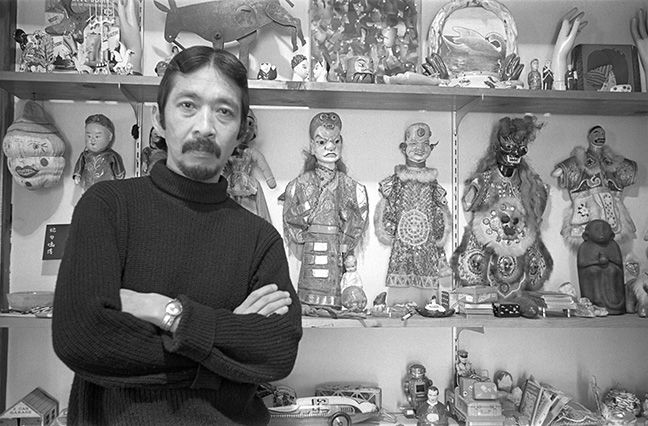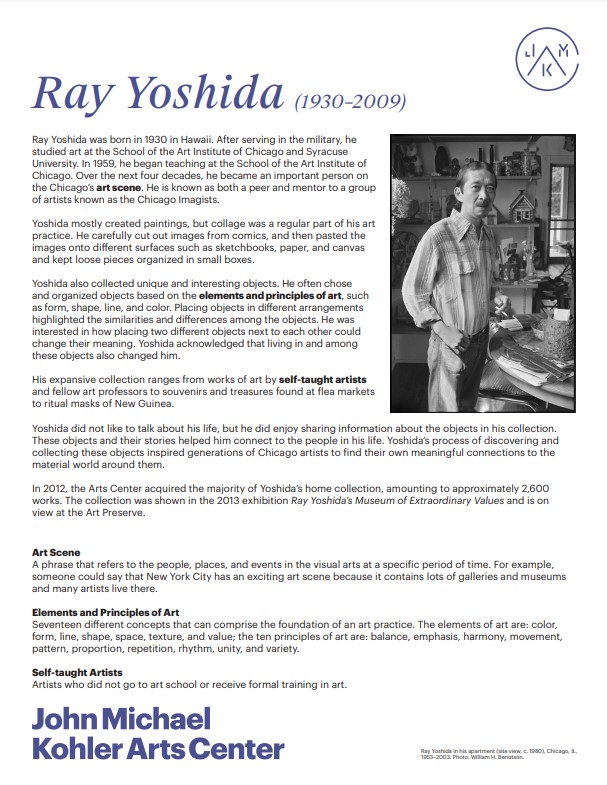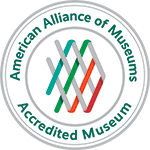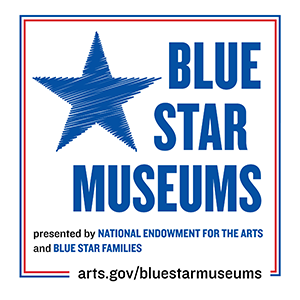Ray Yoshida Education Resources

Ray Yoshida was born in 1930 in Hawaii. After serving in the military, he studied art at the School of the Art Institute of Chicago and Syracuse University. In 1959, he began teaching at the School of the Art Institute of Chicago. Over the next four decades, he became an important person on the Chicago’s art scene. He is known as both a peer and mentor to a group of artists known as the Chicago Imagists.
Yoshida mostly created paintings, but collage was a regular part of his art practice. He carefully cut out images from comics, and then pasted the images onto different surfaces such as sketchbooks, paper, and canvas and kept loose pieces organized in small boxes. Yoshida also collected unique and interesting objects. He often chose and organized objects based on the elements and principles of art, such as form, shape, line, and color. Placing objects in different arrangements highlighted the similarities and differences among the objects. He was interested in how placing two different objects next to each other could change their meaning. Yoshida acknowledged that living in and among these objects also changed him.
His expansive collection ranges from works of art by self-taught artists and fellow art professors to souvenirs and treasures found at flea markets to ritual masks of New Guinea. Yoshida did not like to talk about his life, but he did enjoy sharing information about the objects in his collection. These objects and their stories helped him connect to the people in his life. Yoshida’s process of discovering and collecting these objects inspired generations of Chicago artists to find their own meaningful connections to the material world around them.
In 2012, the Arts Center acquired the majority of Yoshida’s home collection, amounting to approximately 2,600 works. The collection was shown in the 2013 exhibition Ray Yoshida’s Museum of Extraordinary Values and is on view at the Art Preserve.





